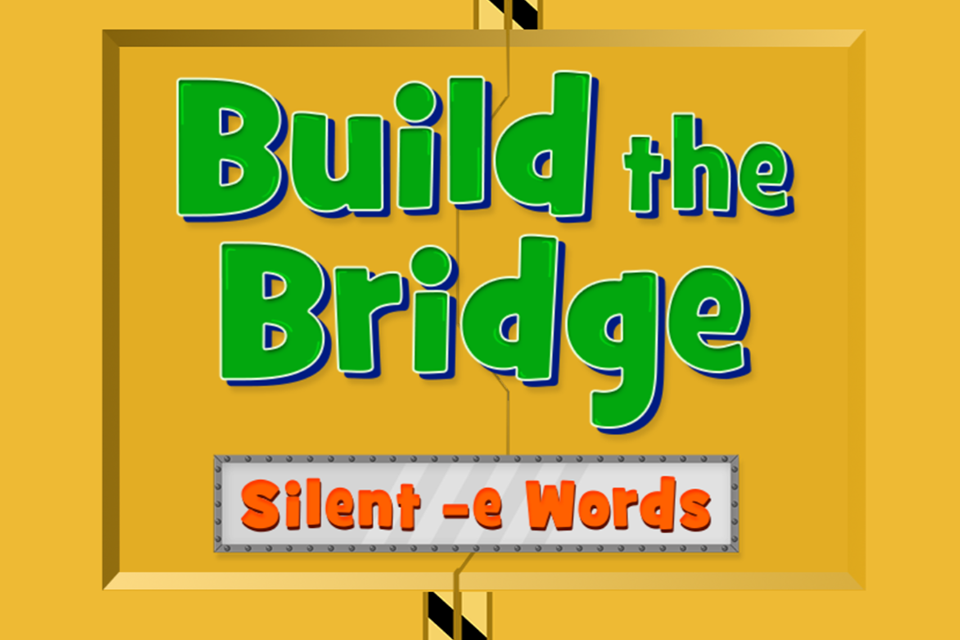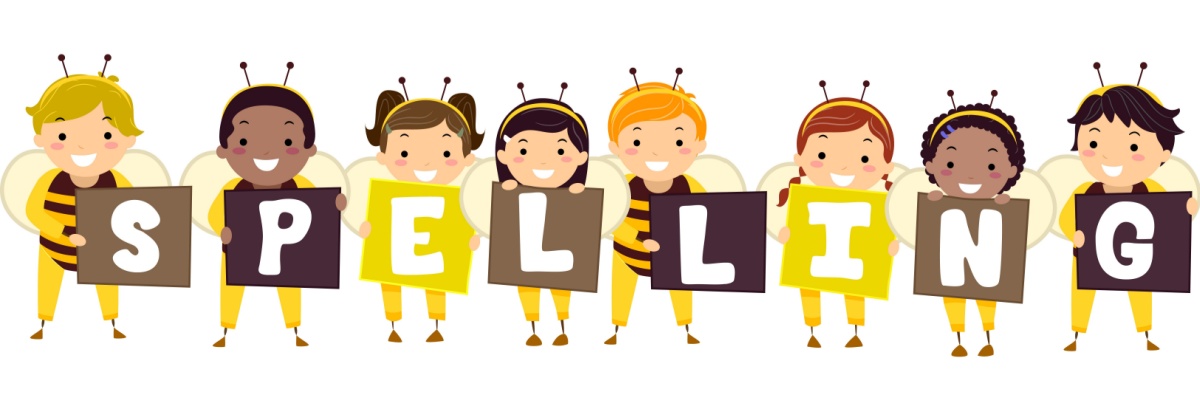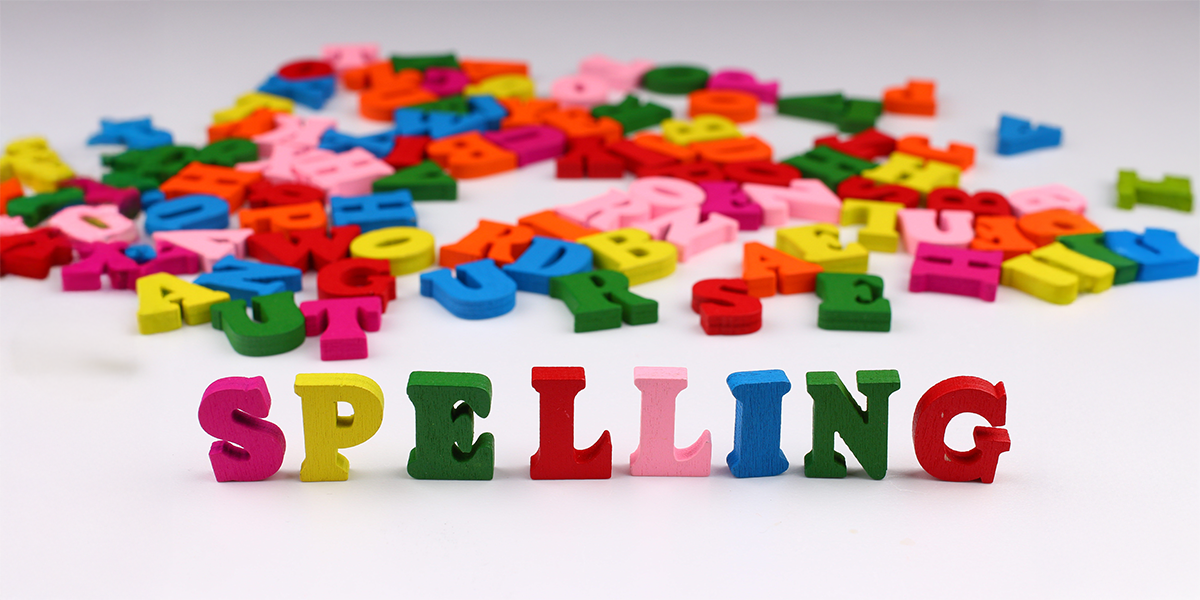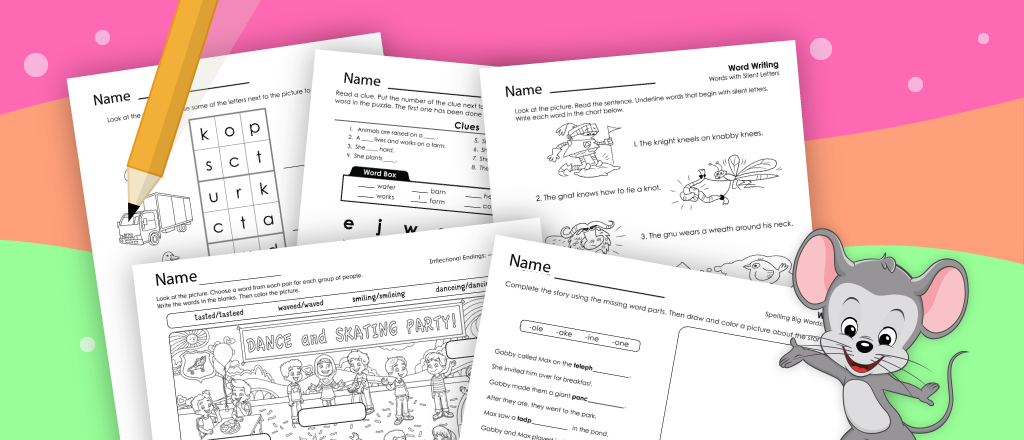
Spelling Rules and Patterns Kids Should Know + Free Printable Spelling Guide
Take the guesswork out of spelling with a free printable list of essential spelling rules for kids.
“The baby played while his neighbor laid great plates of gauges on the conveyor.” Sentences like that one cause people to say that English spelling is just too hard to learn. After all, there are eight different spellings of the long A sound in that sentence alone! But in reality, linguists estimate that 70-85% of English words follow standard spelling rules, and knowing those rules can be incredibly helpful to new readers and English language learners.
In reading instruction, words that follow standard spelling patterns are known as decodable words or regularly spelled words. These words can typically be sounded out using the phonics rules children have learned. These same words are also the first that students learn to spell and write on their own.
Words that don’t follow standard spelling rules are known as irregularly spelled words and are usually taught as high-frequency words (also known as sight words), which often require children to note the way in which the word “breaks the rules,” then memorize the correct spelling.
Tip: We recommend using these rules in conjunction with our How to Teach Spelling guide and lists of spelling words for kindergarten, first grade, and second grade. Our free printable spelling worksheets are also a great resource for kindergarteners and first graders.
How to Use Spelling Rules
We’ve rounded up 37 English spelling rules that govern a great many of the most commonly used words. That’s a lot of rules to memorize, so don’t try to introduce them all at once. Instead, begin with those in the “Basic Spelling Rules” section, since they cover simple rules children should learn first as they’re the most general and widely-applicable rules.

Then, share spelling rules with children at the same time they learn the associated phonics rules for reading. In other words, there’s no need to share the silent-e rule right away, since most learners don’t tackle words with silent-e spellings until they’re a little more advanced. Instead, focus on rules like Gentle Cindy (when to use hard and soft c and g) or using -es to pluralize words ending in s, x, z, ch, or sh.
As an experienced English speaker, you probably don’t think about most of these rules when you spell–they become ingrained and natural over time. Don’t worry if your child doesn’t memorize all the rules. Use them to introduce new concepts, and then return to them as needed to help your child in areas where they struggle.
Spelling Rules for Children
Beginning Spelling Rules
Teach these rules to those just learning to read and write in English. They’re relatively simple and tend to have few exceptions.

- Every syllable has at least one vowel, which may be a y.
Examples: re-mem-ber, un-der-stand, bi-cy-cle
- Q is always followed by u.
Examples: queen, question, request
- Apostrophes can take the place of a missing letter.
Examples: it’s (it is), don’t (do not)
- Floss Rule: When a word ends in a short vowel sound followed by f, l, s, or z, double the final consonant.
Examples: floss, ball, miss, buzz
Exceptions: bus, focus
Spelling Rules about the Letter Y
Use these rules to help understand more about the letter y, which can be a little tricky.

- Rules for Y to I: If a word ends with a consonant + y, change the y to i before adding a suffix. If the suffix begins with i (e.g. -ing), leave the y.
Examples: Examples: happy–happiness, try–trying
- If a word ends with a vowel + y, keep the y when adding a suffix.
Examples: enjoy–enjoyed, play–playful
- At the beginning of a word or syllable, y is a consonant and stands for the /y/ sound.
Examples: yellow, yawn, beyond
- At the end of a one-syllable word, y is a vowel that stands for the long /i/ sound.
Examples: my, by, cry
- At the end of a two-syllable or longer word, y is a vowel that stands for the long /e/ sound.
Examples: happy, temporary, vocabulary
Spelling Rules About C and G
The letters c and g stand for multiple sounds, but the rules that govern them are relatively consistent.

- Gentle Cindy Rule: C and g stand for their “soft sound” (/s/ and /j/) when following i, e, or y. They stand for their hard sounds (/k/ and /g/) in all other cases.
Examples: creek (hard c), going (hard g), cereal (soft c), giant (soft g)
Exceptions: G tends to have more exceptions, often when followed by i. Words pronounced with a hard g include gift, girl, give, and get.
- I Before E, Except After C: In most words, use -ie. If the vowel team comes after c, use -ei.
Examples: fierce, friend, receipt, ceiling
Exceptions: There are many exceptions to this rule, such as seize, leisure, weird, neither their, neighbor, height, etc. These words must simply be memorized.
- K Takes I or E; C Takes the Other Three: When a word starts with the /k/ sound, it’s usually spelled with a c if it’s followed by a, o, or u. If it’s followed by i or e, it starts with k.
Examples: cat, cool, cusp, kelp, kite
- If a one-syllable word ends in a short vowel sound plus the hard c sound (/k/), it usually ends in -ck.
Examples: back, neck, snack
- If a two or more-syllable word ends in the hard c sound (/k/), it’s usually spelled with a -c.
Examples: basic, generic, chronic
- When adding a suffix that starts with i or e to a word ending in c, use -ck to preserve the hard c sound.
Examples: panic–panicking, picnic–picnicked
- If a word ends in a long vowel sound, diphthong (like -oo), or consonant plus the /k/ sound, it usually ends in just -k.
Examples: soak, book, milk
Exceptions: zinc, arc, disc, talc
- For words ending in -ce and -ge, keep the final e when adding a suffix that begins with a or o to preserve the soft sound.
Examples: notice–noticeable, courage–courageous.
- If a word ends in -ic, add -ally to form the adverb.
Examples: basic–basically, tragic–tragically.
Exception: public–publicly
Plural Words Spelling Rules
Forming plural words is easier when you master a few simple rules. There are some exceptions that must be memorized, such as unusual plurals (man–men, child–children, fungus–fungi, sheep-sheep). However, plural words are generally good at following the rules.

- S makes a word plural. Apostrophe + s makes a word possessive.
Examples: three girls, the girl’s clothes, many schools, the school’s rules
Exceptions: its, yours, ours, theirs
- Add -es for nouns ending in s, x, z, ch, or sh.
Examples: buses, taxes, boxes, riches, wishes
- If a word ends in a consonant + y, change the y to i and add -es.
Examples: puppy–puppies, baby–babies, city–cities
- When a word ends in -f or -fe, change the f to a v. Add -es if the word doesn’t already end in -e.
Examples: leaf–leaves, knife–knives
- If a word ends in a consonant + o, add -es. If it ends in a vowel + o, just add -s.
Examples: tomato–tomatoes, hero–heroes, radio–radios, kangaroo–kangaroos
Exceptions: photos, pianos, autos
Ends of Words Spelling Rules
These rules usually also apply to the ends of syllables, so they do double-duty!

- -dge vs. -ge: English words never end in j. When the /j/ sound is at the end of a word or syllable, use -dge if it’s preceded by a short vowel. Otherwise, use -ge. Note: -dge is never found at the beginning of a word.
Examples: wedge, badger, cage, huge
- -tch vs. -ch: When the /ch/ sound is at the end of a word or syllable and is preceded by a short vowel sound, use -tch. Otherwise, use -ch. Note: -tch is never found at the beginning of a word.
Examples: witch, catch, kitchen, peach, teacher
Exceptions: rich, which, sandwich, much, such
- -able vs. -ible: If the root word can stand alone, use -able. If it cannot, use -ible.
Examples: enjoyable (enjoy), visible (root word cannot stand alone)
- -al vs. -el: Most adjectives end in -al, while nouns end in -el.
Examples: magical, formal, hotel, label
- -ence vs. -ance: Use -ence for nouns related to the quality of something. Use -ance for nouns related to an action or state of being.
Examples: existence, patience, performance, appearance
- English words never end in v. If you hear the /v/ sound at the end of a word, it’s always followed by a silent -e.
Examples: have, forgive, chive
- When a singular word ends in a consonant + s, add a silent -e so it doesn’t appear to be a plural.
Examples: rinse, purse, worse
Prefixes and Suffixes Spelling Rules
Some suffixes are trickier to spell than others. Fortunately, there are helpful rules to make sense of the more confusing ones, like -tion.
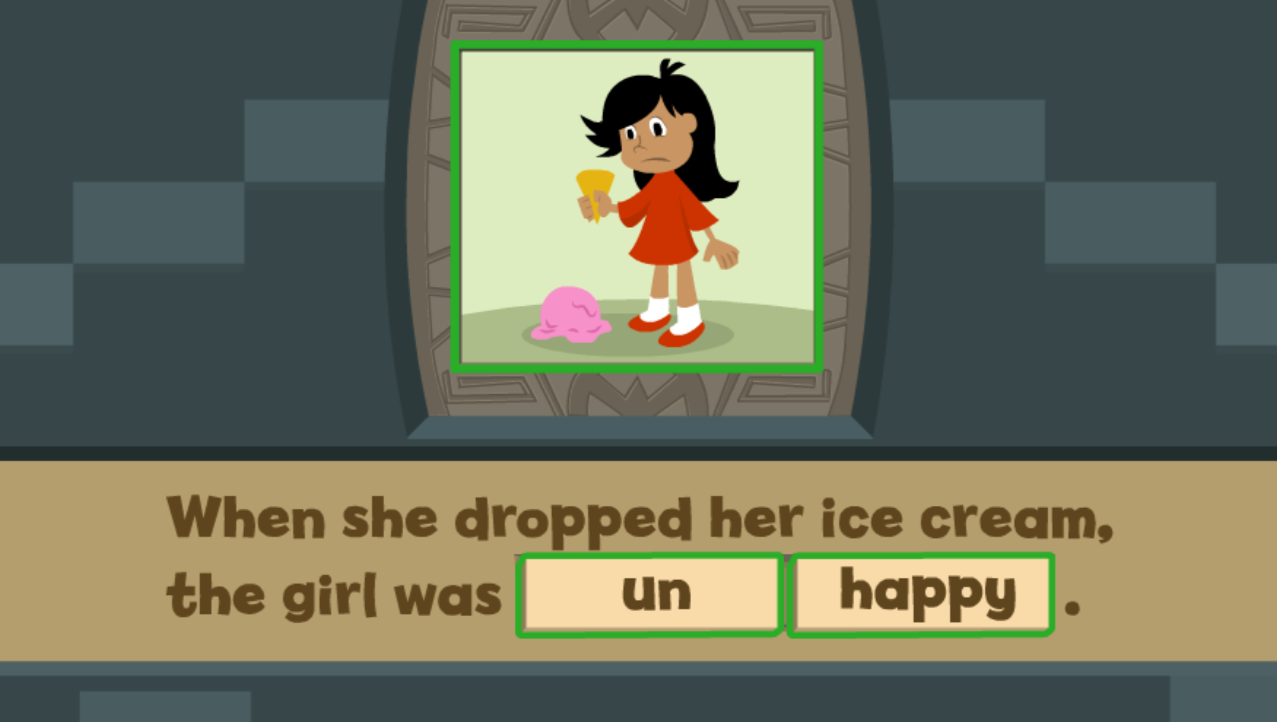
- When adding most prefixes (un-, dis-, or re-), don’t change the spelling of the root word. For more examples and a detailed list, check out our prefix word list.
Examples: unable, disapprove, reuse
- When a word ends with a silent -e, drop the e before adding a suffix that starts with a vowel. Keep the –e when adding a suffix that starts with a consonant.
Examples: flame–flaming, brake–brakes, fine–finer
Exceptions: judgment
- For single syllable words ending in a short vowel sound + consonant, double the final letter before adding a suffix that starts with a vowel.
Examples: win–winning, fun–funnier
- The prefix -al sounds like all, but it’s spelled with only one l.
Examples: alright, already, almost, always
- -ful: Although this suffix means full of, it only uses a single l.
Examples: graceful, mindful, wonderful
- -tion vs. -sion: Use -tion if the root word ends in -t. Use -sion if the root word ends in -de or -se (drop the -e).
Examples: invent–invention, act–action, confuse–confusion, decide–decision
- When adding -ing to words ending in a single vowel + consonant, consider which syllable is stressed. If the final syllable is stressed, double the consonant. If another syllable is stressed, do not double the consonant.
Examples: begin–beginning, visit–visiting
Top 15 Spelling Rules for Kids (Free Printable List)
- Every syllable has at least one vowel, which may be a y.
Examples: re-mem-ber, un-der-stand, bi-cy-cle
- Q is always followed by u.
Examples: queen, question, request
- Apostrophes can take the place of a missing letter.
Examples: it’s (it is), don’t (do not)
- Floss Rule: When a word ends in a short vowel sound followed by f, l, s, or z, double the final consonant.
Examples: floss, ball, miss, buzz
Exceptions: bus, focus
- Gentle Cindy Rule: C and g are pronounced with their hard sounds (/k/ and /g/) unless they’re followed by i, e, or y. Then, they use their soft sounds (/s/ and /j/).
Examples: creek (hard c), going (hard g), cereal (soft c), giant (soft g)
Exceptions: G tends to have more exceptions, often when followed by i. Words pronounced with a hard g include gift, girl, give, and get.
- I Before E, Except After C: In most words, use -ie. If the vowel team comes after c, use -ei.
Examples: fierce, friend, receipt, ceiling
Exceptions: There are many exceptions to this rule, such as seize, leisure, weird, neither, their, neighbor, height, etc. These words must simply be memorized.
- S makes a word plural. Apostrophe + s makes a word possessive.
Examples: three girls, the girl’s clothes, many schools, the school’s rules
Exceptions: its, yours, ours, theirs
- Add -es for nouns ending in s, x, z, ch, or sh.
Examples: buses, taxes, boxes, riches, wishes
- If a word ends in a consonant + y, change the y to i and add -es.
Examples: puppy–puppies, baby–babies, city–cities
- When a word ends in a silent -e, drop the -e before adding a suffix that starts with a vowel. Keep the –e when adding a suffix that starts with a consonant.
Examples: flame–flaming, brake–brakes, fine–finer
Examples: flame–flaming, brake–brakes, fine–finer
- For single syllable words ending in a single vowel + consonant, double the final letter before adding a suffix that starts with a vowel.
Examples: win–winning, fun–funnier
- -tch vs. -ch: When the /ch/ sound is at the end of a word or syllable and is preceded by a short vowel sound, use -tch. Otherwise, use -ch. Note: -tch is never found at the beginning of a word.
Examples: witch, catch, kitchen, peach, teacher
Exceptions: rich, which, sandwich, much, such
- -dge vs. -ge: English words never end in j. When the /j/ sound is at the end of a word or syllable, use -dge if it’s preceded by a short vowel. Otherwise, use -ge. Note: -dge is never found at the beginning of a word.
Examples: wedge, badger, cage, huge
- -able vs. -ible: If the root word can stand alone, use -able. If it cannot, use -ible.
Examples: enjoyable (enjoy), visible (root word cannot stand alone)
- –al vs. –el: Most adjectives end in -al, while nouns end in -el.
Examples: magical, formal, hotel, label
ABCmouse’s expert advice review process:
Our team of ABCmouse Curriculum Experts, made up of talented professionals in early childhood education and development, take a close look at educational content and learning claims. They put in the effort to make sure our information is accurate and current. We have a certified educator or another respected authority review the content, matching their expertise with the topic at hand. They’ll make sure the content is thorough and follows the latest research and educational guidelines. If they think we can make things even better, they’ll chat with our editorial team, and we’ll make those improvements right away. Only after a reviewer gives their thumbs-up does a piece of content get the official stamp of approval in the byline.
-
Build the Bridge Silent -e Words
Help kids master silent -e words with a fun bridge-building game! Identify words, practice phonics, and improve reading skills through interactive play.
-
What Are CVC Words? Plus, Examples and Free Activities
Discover the importance of CVC words in early reading skills! Explore examples, teaching tips, and engaging free activities to help children decode simple consonant-vowel-consonant patterns, laying…
-
Spelling Words for Kids (Free Printables)
Discover free printable spelling lists, worksheets, and activities designed for kids in kindergarten through second grade. Explore high-frequency words, essential spelling rules, and interactive games to…
-
Spelling Rules and Patterns Kids Should Know + Free Printable Spelling Guide
Help kids master spelling with essential rules and patterns for common words. From basic rules to tricky ones like silent-e and plurals, this guide offers easy…
-
35 Fun Spelling Activities for Early Elementary Kids
Add creativity to spelling practice with 33 fun and interactive activities perfect for kindergarten through second grade. From writing in shaving cream to bouncing a ball…
-
Free Printable Spelling Worksheets
Explore a variety of free, printable spelling worksheets designed for kindergarten and first-grade students. These worksheets cover topics like silent letters, letter blends, and word endings.…

